Kasabian music; An Album Review
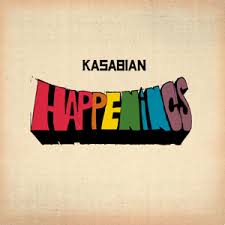
Kasabian music; An Album Review
Kasabian music has defined a unique blend of indie rock, electronic, and alternative sounds since the early 2000s. Over nearly two decades, the band from Leicester, UK, has delivered a series of albums that showcase their evolving style and energy. From their self-titled debut to their latest releases, Kasabian music combines powerful rhythms, catchy hooks, and thoughtful lyrics. This album review explores each of Kasabian’s studio albums, highlighting how their sound changed, which tracks stood out, and the impact these records made on fans and critics alike. Whether you are a long time follower or new to their music, this guide offers a detailed look into the band’s journey and their contribution to modern rock.
Most Asked Questions About Kasabian
When is Kasabian's next album out?
Kasabian released their latest album, Happenings, in July 2024. As of now, they haven’t announced another album. However, based on past release cycles, fans can expect more Kasabian music within the next few years.
Who are the current members of Kasabian?
Kasabian currently includes Serge Pizzorno (vocals, guitar), Chris Edwards (bass), Ian Matthews (drums), and Tim Carter (guitar). Serge stepped up as lead vocalist in 2020.
Why did Tom Meighan leave Kasabian?
Tom Meighan left the band in 2020 following a domestic assault conviction. The band acted quickly and decisively. They expressed support for victims of abuse and continued as a four-piece, with Serge taking over vocals.
What are Kasabian's most popular songs?
Some of the most recognisable Kasabian music includes “Fire,” “Club Foot,” “Empire,” and “Underdog.” These tracks regularly feature at festivals and on alternative rock playlists.
Where is Kasabian from?
Kasabian formed in Leicester, UK, in the late 1990s. Their name has become one of the city's biggest musical exports.
What is Kasabian's best album?
Many fans and critics consider West Ryder Pauper Lunatic Asylum or Empire to be the strongest. However, preferences vary depending on taste and era.
Are Kasabian touring in 2025?
Kasabian have not yet confirmed a 2025 tour. However, given the release of Happenings, live dates are likely.
What genre of music is Kasabian?
Kasabian music combines indie rock, alternative rock, and electronic elements. Their style has evolved while keeping a strong rhythmic identity.
What does “Kasabian” mean?
The name comes from Linda Kasabian, a former member of the Manson Family. Guitarist Chris Karloff found it in a book. Despite the dark origin, the band has focused on giving the name new artistic meaning.
1. West Ryder Pauper Lunatic Asylum (2009)
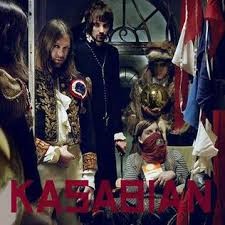
Released in 2009, West Ryder Pauper Lunatic Asylum marked a creative breakthrough in Kasabian music. The band took a bold leap into psychedelia, crafting an album full of surreal imagery and genre-blending sounds. With this release, Kasabian proved they could reinvent their style while holding onto their identity.
From the start, tracks like “Fire” and “Underdog” pushed the band into wider popularity. These singles received heavy radio play and helped the album reach number one in the UK. The blend of hypnotic grooves, swaggering guitar work, and electronic flourishes defined a new era for Kasabian music.
Critics responded with enthusiasm. Many praised the record’s ambition, cohesion, and darker atmosphere. The album drew comparisons to classic psych-rock while remaining firmly modern. Its theatrical concept—a loose theme around an old mental institution—added a narrative edge that enhanced its replay value.
Serge Pizzorno took full control of the band’s direction here. His songwriting matured, with deeper lyrics and more varied arrangements. Tom Meighan’s vocals brought grit and character to each track. Together, they crafted an immersive listening experience that stood apart from their earlier work.
Commercially, the album was a major success. It stayed on the charts for months and received multiple award nominations. Many longtime fans still consider it their most complete and original work. Importantly, it also helped the band grow their international fanbase, especially in Europe and Japan.
The album’s balance of experimentation and accessibility became a blueprint for future records. It marked a turning point—Kasabian music was no longer just for indie clubs. It was now festival-defining and globally relevant.
2. Empire (2006)

Released in 2006, Empire marked a bold step forward in Kasabian music. The band expanded their sound, moving beyond the raw electronics of their debut. This album leaned into glam rock influences, adding layers of grandeur and confidence. Although still rooted in indie rock, Empire showcased a band unafraid to evolve.
“Empire” and “Shoot the Runner” became standout singles, quickly gaining traction on both radio and live stages. These tracks boosted the album's momentum and confirmed Kasabian music as a growing force in British rock. The songs carried heavier choruses, more defined riffs, and a greater sense of drama.
Critically, Empire received stronger praise than their debut. Reviewers noted its improved songwriting, broader musical direction, and sharper production. It also demonstrated Kasabian’s rising maturity without sacrificing their energy.
Commercially, the album soared. It debuted at number one on the UK Albums Chart and earned platinum certification. The growing fanbase responded to the new sound, while older fans embraced the band’s progression.
Produced by Jim Abbiss again, the album had a cinematic edge. Many of its lyrics addressed political disillusionment, power, and rebellion. Though darker in tone, the messages were wrapped in catchy hooks and danceable beats.
Guitarist and songwriter Serge Pizzorno stepped up as a major creative force during this period. His influence helped define the album’s tone and direction. Additionally, this would be the last album to feature co-founder Chris Karloff, who departed during recording.
Despite internal changes, Empire elevated Kasabian music to headliner status. It proved the band could grow, experiment, and deliver chart-topping success. Over time, many fans and critics have come to view Empire as one of Kasabian’s best achievements.
3. Kasabian (2004)
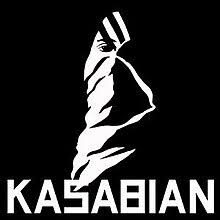
Kasabian’s self-titled debut album launched the band into the UK indie rock spotlight in 2004. Blending electronic loops with gritty guitar riffs, this record helped define early-2000s alternative rock. Kasabian music immediately set itself apart from its peers through aggressive beats and futuristic textures. Though critics offered mixed reviews at the time, many now view the album as an essential moment in modern British music.
Importantly, this album introduced Kasabian music to a global audience. Tracks like “Club Foot” and “L.S.F.” became festival staples and received heavy rotation on radio and TV. Their fusion of indie energy and dance-floor readiness gained traction with both rock fans and clubgoers.
Despite lacking polish compared to later efforts, Kasabian showed clear artistic ambition. The band’s confidence radiates through every track. Moreover, their early use of loops and samples stood out against the more traditional rock sounds of the time.
Commercially, the album performed well, reaching number four on the UK Albums Chart. It went on to achieve multi-platinum status in the UK, confirming the public’s appetite for their hybrid sound.
Collaborators like producer Jim Abbiss helped the band craft a sound that felt urgent and forward-thinking. Themes of rebellion, control, and disconnection echo throughout the lyrics, reflecting early 2000s culture.
Since its release, fans have continued to revisit the debut for its raw energy and genre-crossing approach. While not their most refined record, it captured the spirit of a band with clear vision and sonic fearlessness. For many, this album remains their introduction to the enduring power of Kasabian music.
4. Velociraptor! (2011)
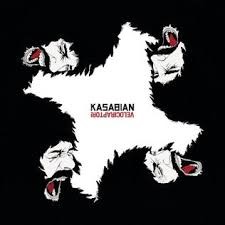
Released in 2011, Velociraptor! continued the evolution of Kasabian music. The band built on the experimental style of their previous album while injecting even more diversity. This time, they mixed Middle Eastern influences, Britpop melodies, and orchestral elements into their core electronic rock sound.
Songs like “Days Are Forgotten” and “Re-Wired” received significant airplay. These singles captured the raw energy fans expected, but with sharper production and grander arrangements. As a result, the album debuted at number one in the UK and quickly went gold.
Critics praised Velociraptor! for its adventurous spirit and strong songwriting. Reviewers noted that Kasabian music had matured, balancing innovation with accessibility. The album also gained attention for its cinematic scope—each track felt designed for both arenas and headphones.
Thematically, the album explored identity, modern chaos, and escapism. Serge Pizzorno once again led the creative vision, blending genres without losing focus. His confidence as both writer and producer gave the album coherence and boldness. Tom Meighan’s vocal delivery remained commanding, adding intensity to each track.
Velociraptor! also benefited from clever sequencing. The album flowed well, creating a cohesive listening experience. Additionally, it maintained the theatrical edge introduced in West Ryder Pauper Lunatic Asylum, but with more hooks and rhythm-driven energy.
Commercial success followed quickly. Kasabian music dominated UK charts and festival stages during this period. The band’s global reach expanded, especially in Europe and Asia, where fans embraced the record’s experimental flair.
Ultimately, Velociraptor! solidified Kasabian’s position as one of Britain’s most creative rock acts. It showed that the band could innovate without alienating their core audience, and it remains a fan favourite to this day.
5. 48:13 (2014)

Released in 2014, 48:13 marked a bold shift in Kasabian music. Named after its total runtime, the album stripped things down both sonically and visually. The minimal pink cover reflected the raw, back-to-basics approach that defined the record’s aesthetic. Despite its simplicity, the album delivered a powerful impact.
Right from the opening, it was clear Kasabian embraced electronic influences more than ever before. Tracks like “Eez-eh” showcased their playful side, with pulsing beats and repetitive hooks. In contrast, songs such as “Bumblebeee” retained the heavy rock edge fans loved. This balance helped maintain the core of Kasabian music while exploring new territory.
Critically, reactions were mixed but leaned positive. Some praised the band’s fearless experimentation and energy. Others felt the stripped-back style lacked the depth of earlier work. However, the album’s boldness stood out in a crowded indie landscape. It sparked conversations and reinforced Kasabian’s reputation for taking risks.
Commercially, 48:13 performed well. It became the band’s fourth consecutive UK number one album. The lead single “Eez-eh” received extensive radio play and became a festival anthem. The album’s lean production also translated well on stage, allowing the band’s live shows to feel more urgent and energetic.
The record demonstrated Serge Pizzorno’s growing influence as producer and creative lead. His vision shaped the album’s electronic pulse, giving it a unique place in Kasabian’s discography. Meanwhile, Tom Meighan’s vocals provided the needed grit to ground its synthetic textures.
In hindsight, 48:13 may be one of the most divisive entries in Kasabian music. Yet it showcased the band’s refusal to play it safe, offering fans a raw, focused, and memorable experience that still resonates with many.
6. For Crying Out Loud (2017)
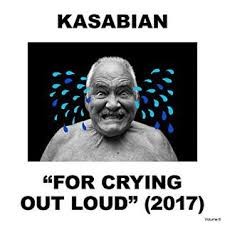
Released in 2017, For Crying Out Loud brought another shift in Kasabian music. This time, the band leaned into guitar-driven anthems and retro influences. The album aimed to restore rock’s presence in a pop-heavy chart landscape. It did so with confidence and bold hooks.
Kasabian returned to a more traditional sound without abandoning their signature energy. Tracks like “You’re in Love with a Psycho” and “Bless This Acid House” delivered catchy choruses and live-show intensity. These songs connected quickly with fans and received strong airplay across major UK stations.
Commercially, the album hit number one in the UK, continuing the band’s impressive streak. Critics noted that For Crying Out Loud felt more accessible than 48:13, with more emphasis on melodies and guitars. Some praised its simplicity; others felt it lacked the edge of earlier Kasabian music. However, the band’s focus on fun and rhythm proved effective.
Serge Pizzorno produced the record, bringing a warm and nostalgic feel to its sound. He described the album as a reaction to darker times, aiming to make people feel good. That intention shaped the album’s upbeat tone and lyrical optimism. Tom Meighan’s vocals, meanwhile, remained a strong presence and gave each track force.
Live performances of these songs became fan favourites, especially at festivals. The band embraced a playful image during this era, blending humour with swagger. That vibe helped the album gain traction beyond core fans.
Overall, For Crying Out Loud didn’t reinvent Kasabian music, but it reaffirmed their strengths. It offered an energetic, guitar-heavy collection designed to lift spirits and celebrate the band’s rock roots. The album stands as a confident, crowd-pleasing entry in Kasabian’s evolving catalogue.
7. The Alchemist's Euphoria (2022)
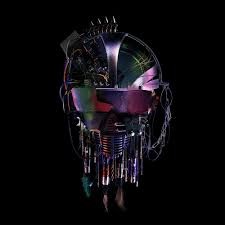
Released in 2022, The Alchemist’s Euphoria marked a major turning point in Kasabian music. It was the first album without former frontman Tom Meighan. Serge Pizzorno stepped in as lead vocalist, taking on full creative control. This change reshaped the band’s identity but kept their energy intact.
The album introduced a more cinematic and introspective tone. While still rooted in electronic rock, it explored darker moods and layered arrangements. Songs like “ALYGATYR” and “The Wall” revealed a new emotional depth. Yet, high-tempo tracks like “Scriptvre” ensured Kasabian music retained its pulse and urgency.
Critics gave the album a largely positive reception. Many praised Pizzorno’s confident vocal debut and the adventurous production. While some longtime fans missed Meighan’s presence, most acknowledged the bold step forward. The album debuted in the UK Top 10, proving the band could still command attention.
Lyrically, the record reflected on change, resilience, and rebirth. Pizzorno used the album to process recent upheaval and reintroduce Kasabian with purpose. This vision made the record feel cohesive, even as it balanced heavy themes with euphoric highs. The blend of introspection and explosive sound defined the album’s appeal.
Touring in support of The Alchemist’s Euphoria showcased the new Kasabian lineup. Fans responded positively to Pizzorno’s presence as frontman. His charisma and energy kept live shows vibrant. These performances also helped solidify the album’s place in the wider Kasabian music legacy.
Overall, The Alchemist’s Euphoria served as both a transition and a statement. It proved Kasabian could evolve without losing their core. The album reasserted their relevance while embracing growth, making it one of the most significant chapters in Kasabian music so far.
8. Happenings (2024)

Released in 2024, Happenings delivered a sharp, condensed burst of Kasabian music. Clocking in under 30 minutes, the album focused on high-impact tracks with no filler. This approach reflected the band’s desire to make every second count while maintaining their signature energy and swagger.
Building on the direction of The Alchemist’s Euphoria, the record showcased Serge Pizzorno’s confidence as lead vocalist and creative force. The songs blended indie rock with electronic textures, creating a dynamic yet cohesive experience. Tracks like “Coming Back To Me Good” and “Algorithms” stood out for their immediacy and infectious hooks.
Critics responded positively, praising the band’s ability to evolve without losing their identity. They highlighted the album’s tight production, bold sonic choices, and unapologetic confidence. Kasabian music on Happenings felt both fresh and familiar—stripped down, but fully charged. The band proved they could adapt to changing tastes while staying true to their strengths.
Commercially, the album performed well, earning strong streaming numbers and radio support. It resonated with longtime fans and newer audiences alike. The band’s focus on shorter, punchier songs made it ideal for modern listening habits, further boosting its appeal.
Thematically, Happenings leaned into chaos, transformation, and living in the moment. Pizzorno described the album as “short, sharp and banging,” and that vision shaped its overall tone. Each track hit hard, offering rhythm, urgency, and a sense of celebration.
Live performances brought the album’s energy to life. The band’s chemistry, now fully locked in with its new lineup, impressed critics and fans on tour. These shows helped solidify Happenings as a standout in the modern Kasabian music era.
In summary, Happenings confirmed Kasabian’s ability to innovate while delivering the excitement and edge fans expect. It closed one chapter and opened a new, bold one.
Kasabian music continues to evolve while staying true to the band’s core strengths of energy, innovation, and memorable songwriting. Each album in their discography reflects a different phase, from their early raw rock sound to more experimental and electronic influences. As Kasabian moves forward with new releases and live performances, their music remains a vital part of the UK rock scene and beyond. This album review captures the highlights of their career so far, offering fans and newcomers a clear understanding of what makes Kasabian music distinctive and influential. With a rich catalogue and a passionate fanbase, Kasabian’s legacy looks set to grow even stronger.
One thought on “Kasabian music; An Album Review”
Add a Comment Cancel reply
Recent Posts
Queen studio albums: A Review
Phil Collins Albums Ranked & Reviewed – Complete Guide to Every Studio Album
The best of Massive Attack
Let’s Make Magic
Book Your Event DJ Now





You’ve taken a complex idea and distilled it into something both clear and beautiful.